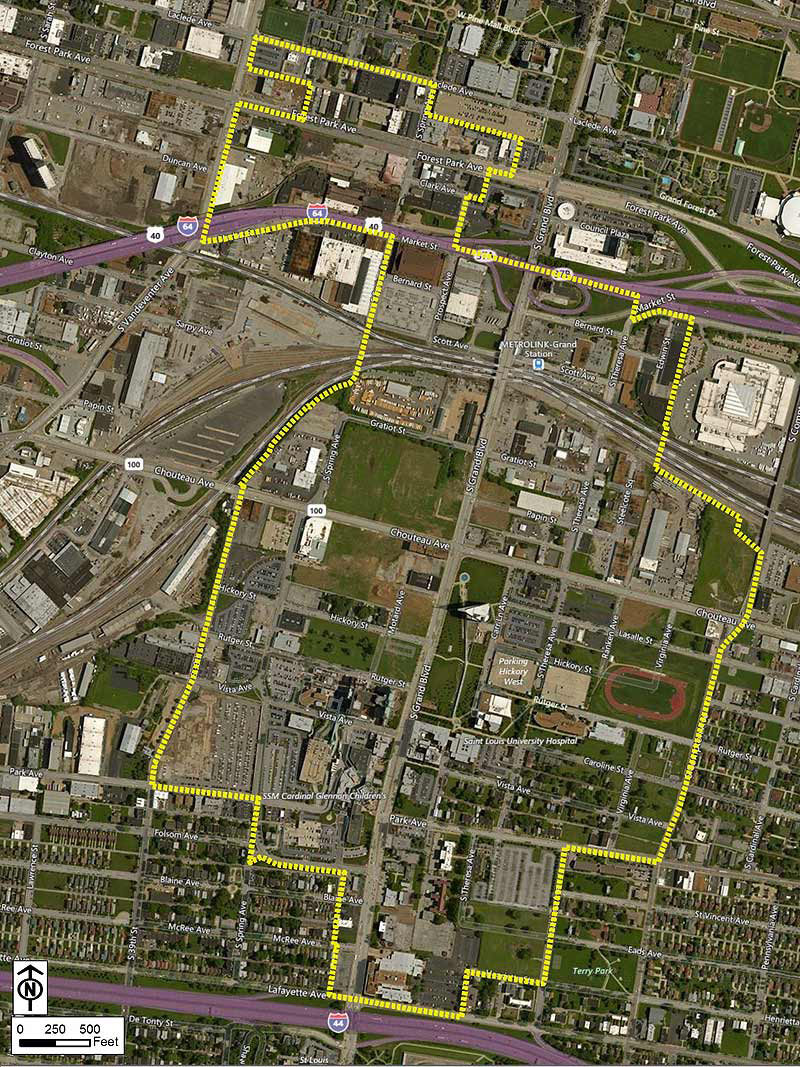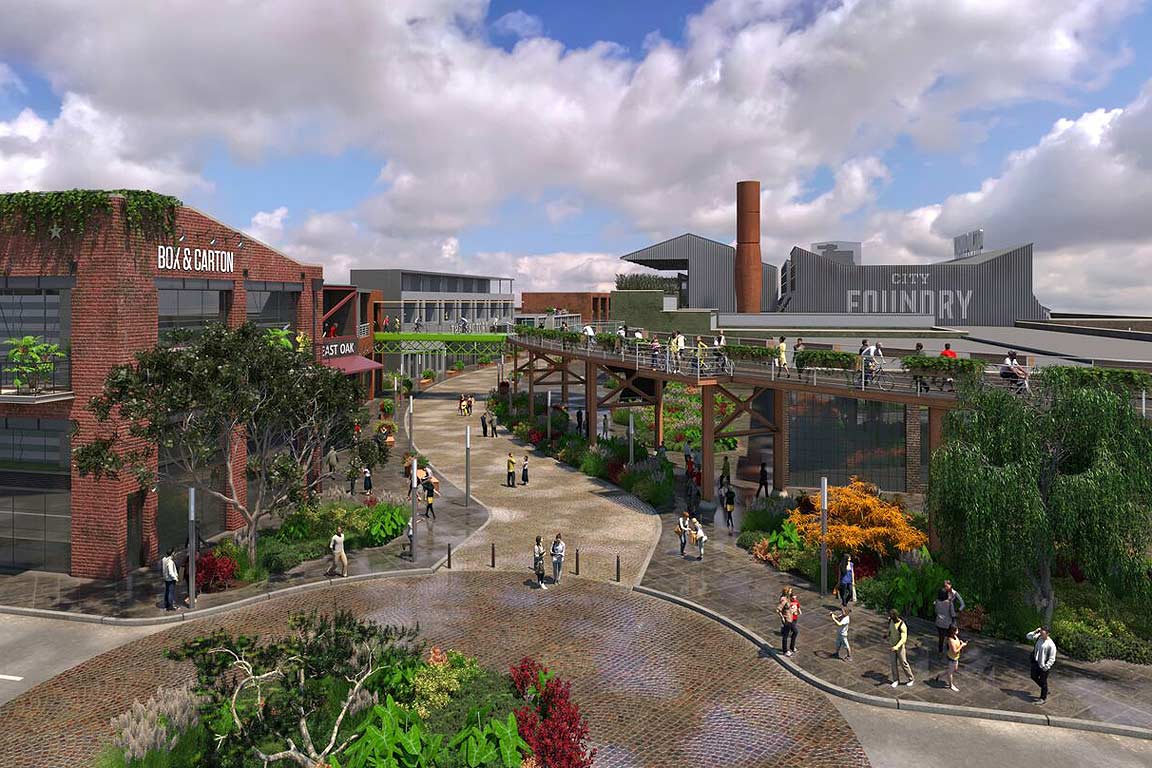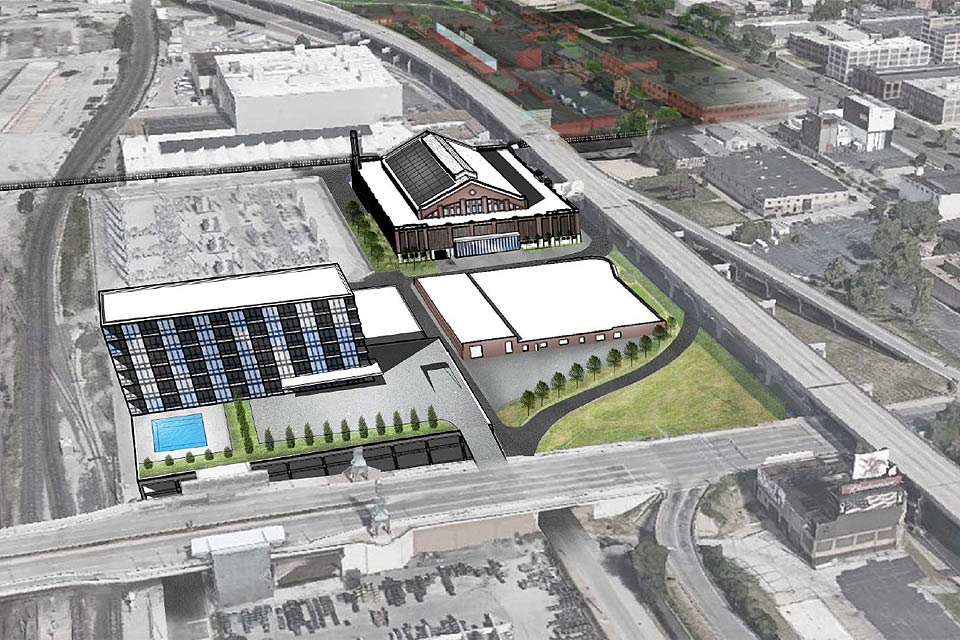SLU Releases Redevelopment Plan for Midtown St. Louis
At a time when developers are planning more than $750 million in new projects in the city’s central corridor, Saint Louis University has shared its vision for nearly 400 acres in midtown St. Louis as it seeks greater influence over development in the future.
SLU is looking to form a redevelopment corporation through Chapter 353 of the Revised Statutes of Missouri — known as the “Urban Redevelopment Corporation Law.” As the area’s master developer, SLU would work to bring in other parties to invest in the area — with authority to grant limited financial incentives. SLU would also have the final say in all new projects.
On Nov. 14, University officials submitted a redevelopment plan to the St. Louis Planning Commission, which unanimously recommended approval. On Dec. 7, the Housing, Urban Development and Zoning Committee of the St. Louis City Board of Aldermen unanimously approved the plan. The full Board of Aldermen gave final approval on Dec. 16.
In broad strokes, SLU's plan lays out proposed uses within the redevelopment area. These include:
- Medical and educational uses including offices and training facilities for those in the health care and life sciences; classrooms and related instructional, laboratory, research, hospice, nursery and day care spaces; and pharmacy facilities.
- Office facilities for private, public and non-profit institutions, businesses and agencies; research facilities; retail, dining, entertainment and other services; hotel and conference facilities; recreational and community facilities; and parking.
- New residential housing near SLU’s south campus, where it’s estimated that 60 to 80 single-family or low-density dwelling units could be constructed on vacant lots in the area.
- A future connection with the proposed Chouteau Greenway, which would flow through the redevelopment area.
David Heimburger, SLU’s vice president and chief financial officer, is leading the redevelopment effort. He said the plan is a 25-year endeavor, and the University is taking a long-term approach as it moves forward with the planning.
“We have been in St. Louis for nearly 200 years, and we are investing in the future of our city with our neighbors,” Heimburger said. “We want to help make St. Louis a better place to live, learn and work.”

A Strategic Priority
SLU’s strategic plan calls for the University to become “a leader in just land use and responsible urban design.” To fulfill this objective, SLU is developing its first campus master plan in 27 years. The University recently held two open forums to update the SLU community about the master planning process and to field questions.
While working on the campus master plan, Heimburger said SLU saw a need to better connect its north and south campuses, which now are separated by the Grand Bridge and a swath of industrial or vacant properties. Heimburger said SLU hopes to spur new projects that will connect its campuses and attract services and venues that will benefit students, patients, faculty and staff, as well as local residents.
“Many portions of the redevelopment area are in tremendous need of investment, especially the areas that have been industrial for more than a century,” Heimburger said. “We’re looking forward to working with our neighbors and community partners to plan for the revitalization of the area.”
The plan also notes that the University hopes to construct a major educational facility on the southwest corner of Grand Boulevard and Chouteau Avenue — currently the site of the former Pevely Dairy industrial complex — sometime in the future. This has been identified as a need in the campus master planning process.
With SLU looking to reduce costs, grow revenues and build a more efficient and effective organization through the Magis Operational Excellence program, Heimburger said it is important to note that creating and administering a redevelopment corporation is expected to be a budget-neutral operation.
The Redevelopment Area
The boundaries of the redevelopment area stretch from 39th Street, Spring Avenue and Vandeventer Avenue on the west; to Compton Avenue on the east; and from Laclede Avenue and Interstate 64 on the north; to Park Avenue and Interstate 44 on the south.
The area encompasses the future home of a new $550 million hospital and outpatient center that SSM Health is planning to build along south Grand Boulevard, adjacent to the current SSM Health Saint Louis University Hospital. As the University’s health care partner, SSM Health will have a seat on the board that would govern a redevelopment corporation SLU would form.
Also included is the former site of the Federal-Mogul foundry, where there are plans to develop a new food hall flanked by offices, retail shops and apartments; as well as the St. Louis Armory on Market Street, where developers hope to build a new entertainment and employment complex featuring a craft brewery, rooftop bar, hotel and more.
Immediately west of the proposed redevelopment area is the Cortex Innovation Community, of which SLU is a founding institution.
With its proximity to Cortex, as well as the Grand MetroLink Station, the area could provide additional opportunities for technology-related and transit-oriented developments.
Community Input
Community engagement is an important part of the process, according to Heimburger. He said that SLU has already been in contact with a number of key property owners in the proposed area, including those behind the foundry and armory projects.
Residential neighborhoods in the Gate District and the Tiffany neighborhood near SLU’s south campus fall within the proposed area. In the months ahead, Heimburger said the University will hold open forums for residents and other stakeholders. He added that no residents are expected to be displaced as part of the plan.
Additionally, the University would form an advisory board made up of area residents and business owners, along with city residents who may have expertise in social services, transportation and other important issues.
While a redevelopment corporation would give SLU oversight of future development projects in the proposed area, Heimburger noted that the University will not seek eminent domain powers to condemn and acquire property from private owners.
Following the planning commission's recommendation, SLU's redevelopment plan goes to the St. Louis Board of Aldermen, which must ultimately approve the measure.
Editor’s Note: For media inquiries, contact Clayton Berry, assistant vice president for communications, at berrycl@slu.edu.



















